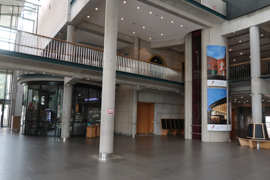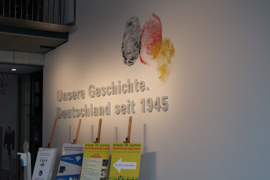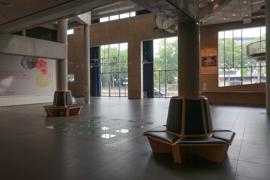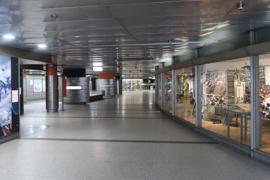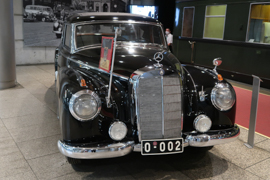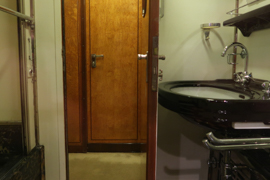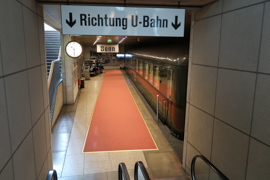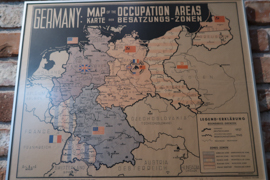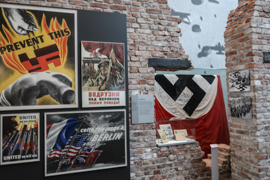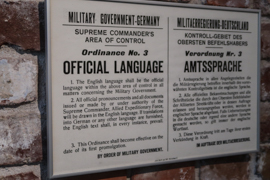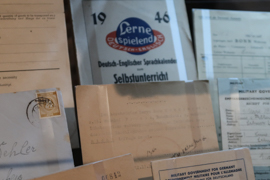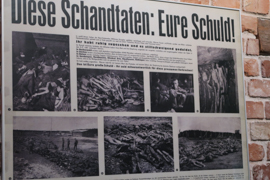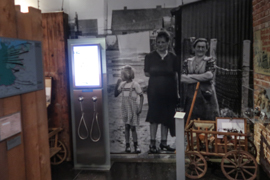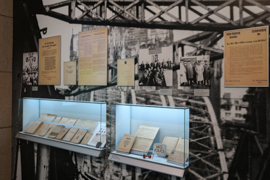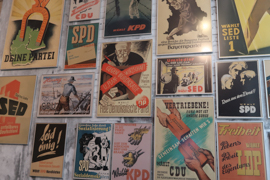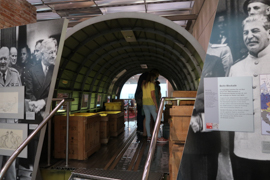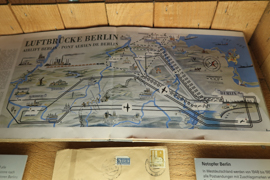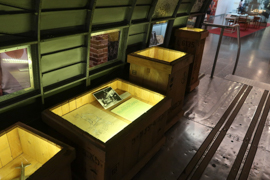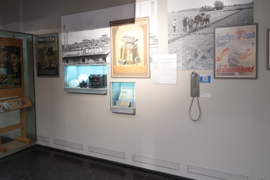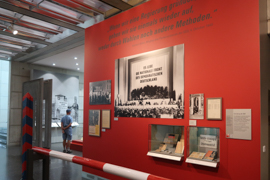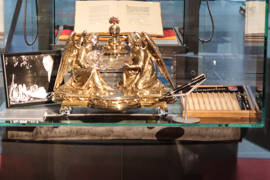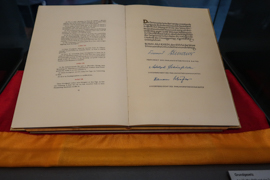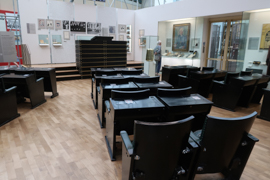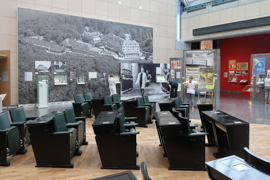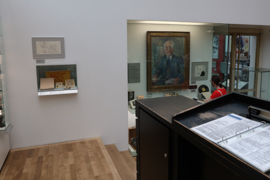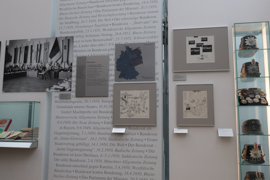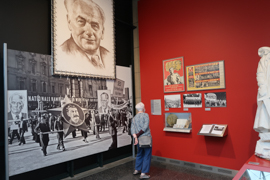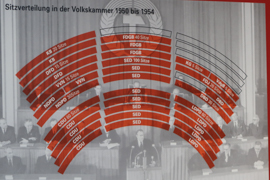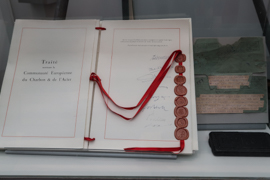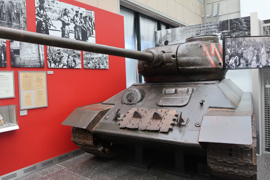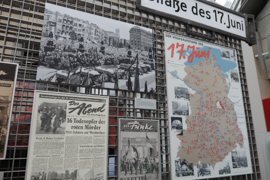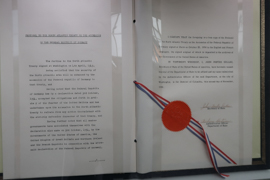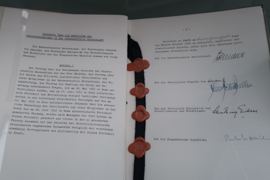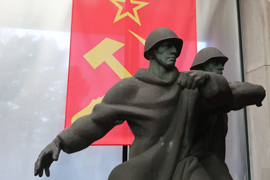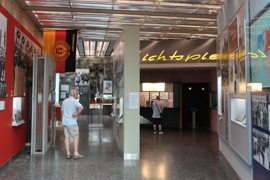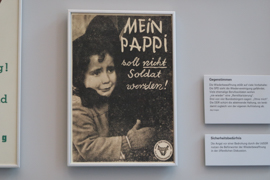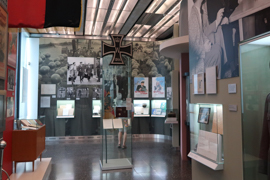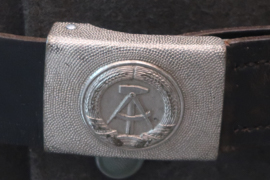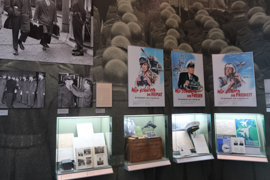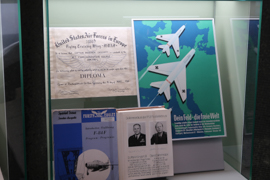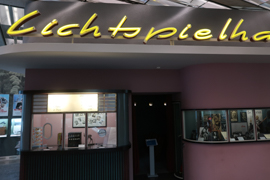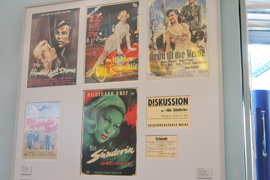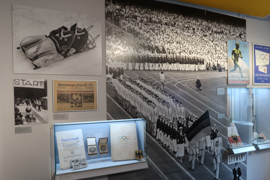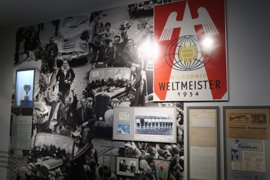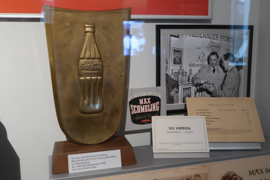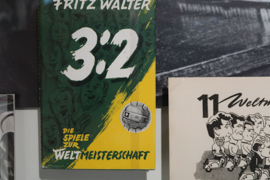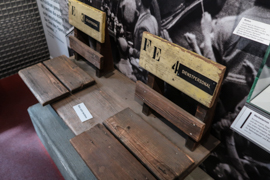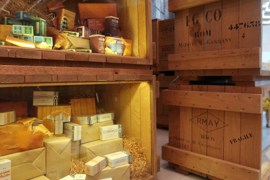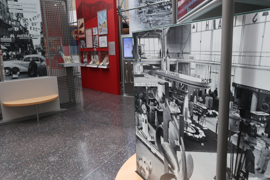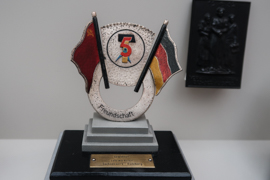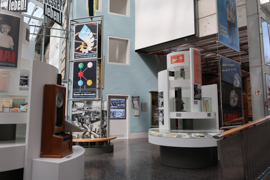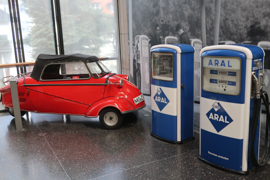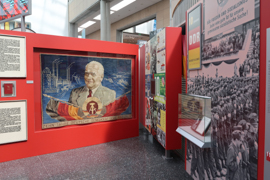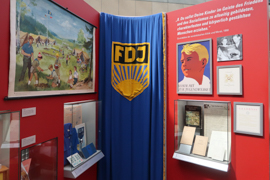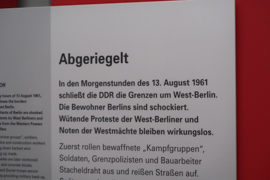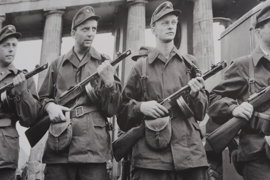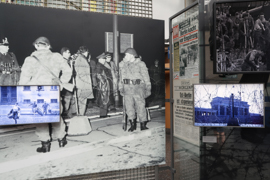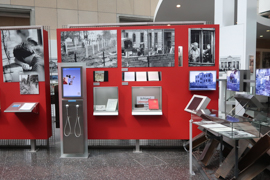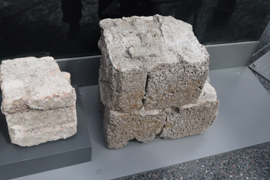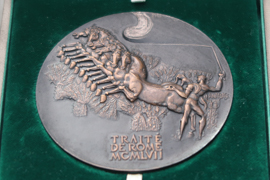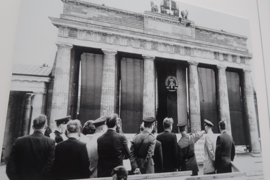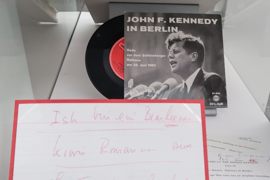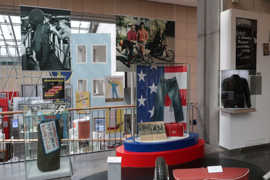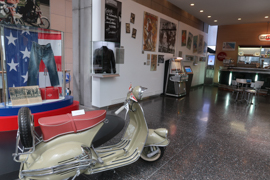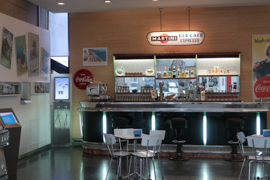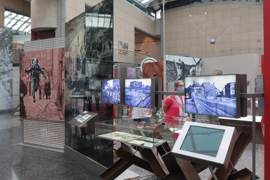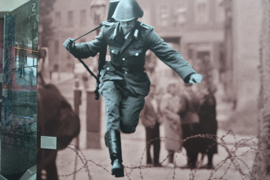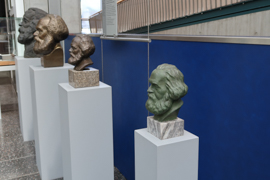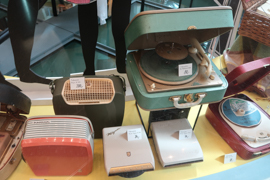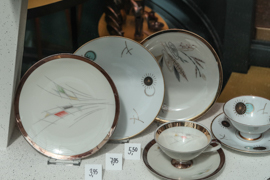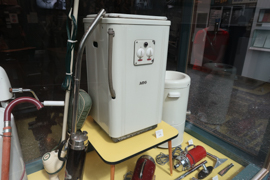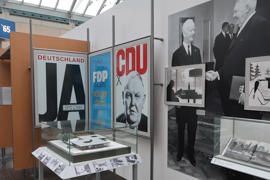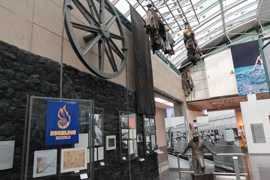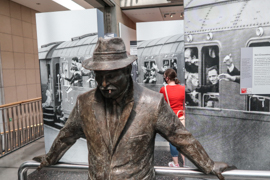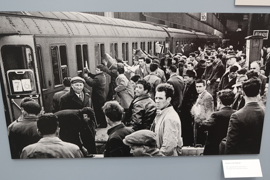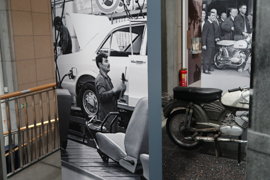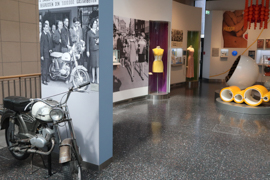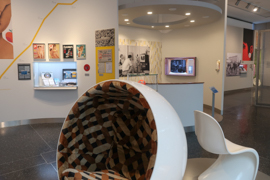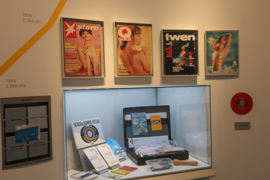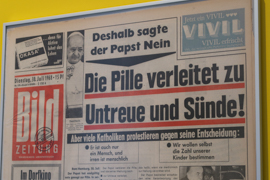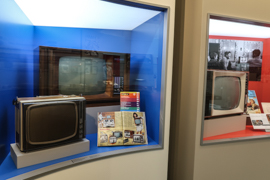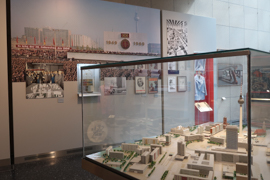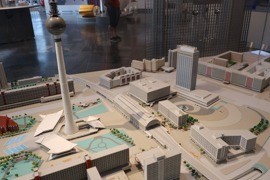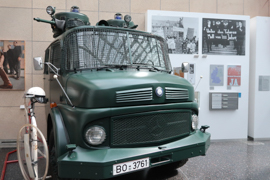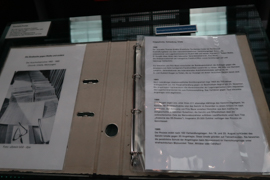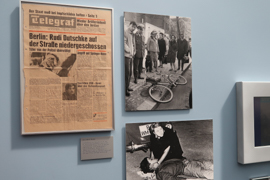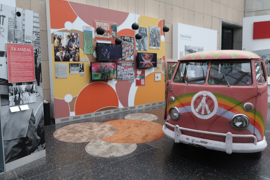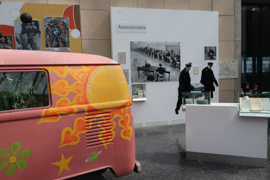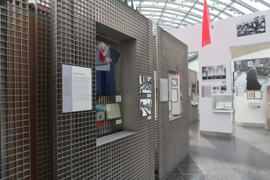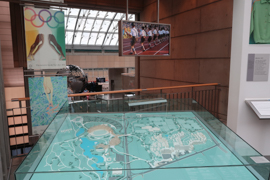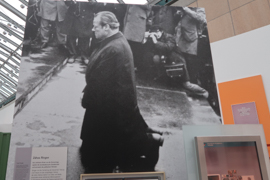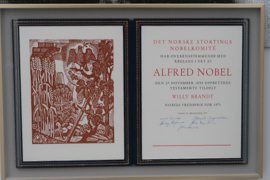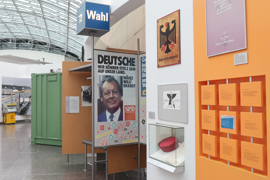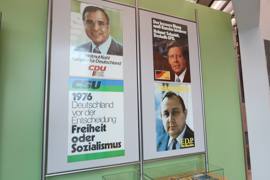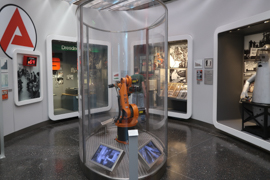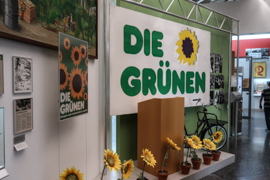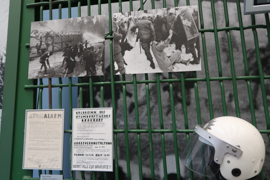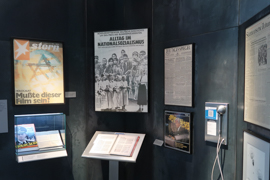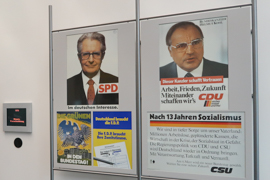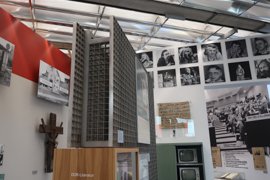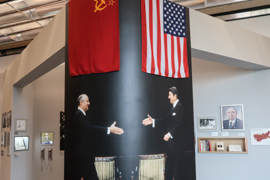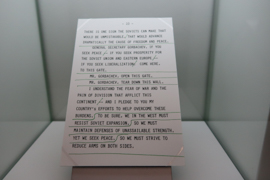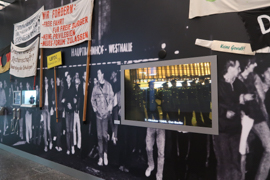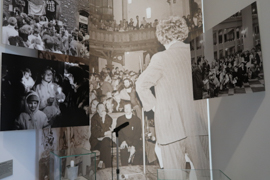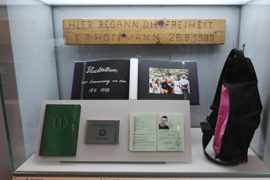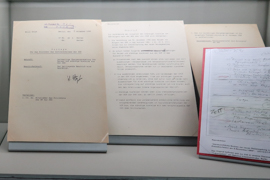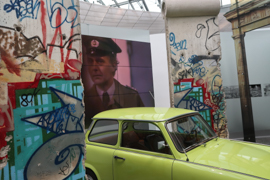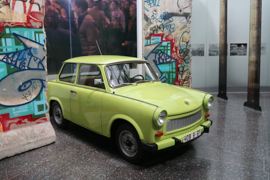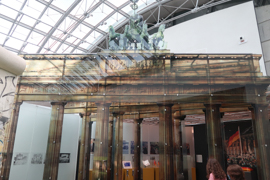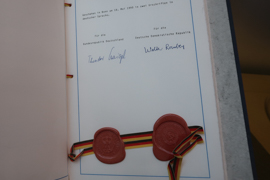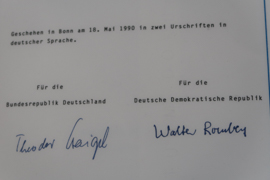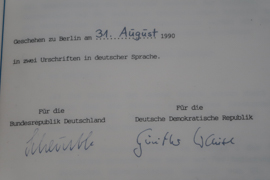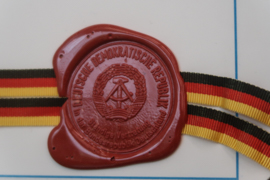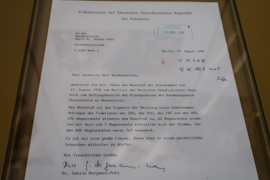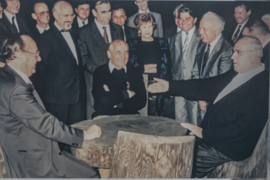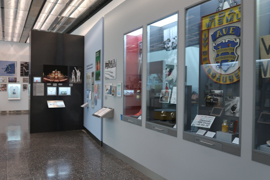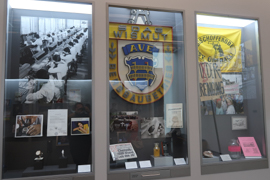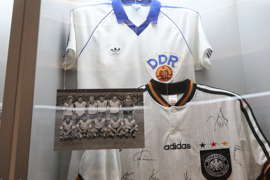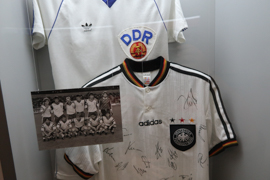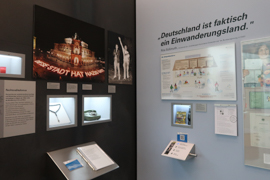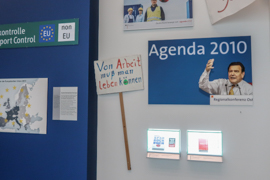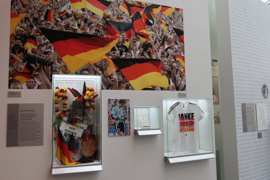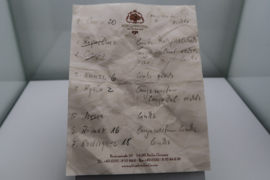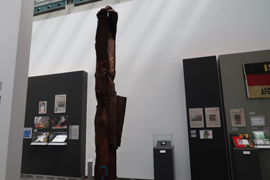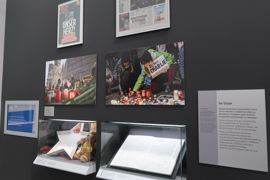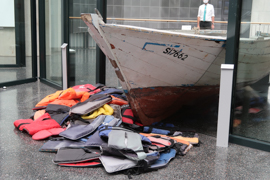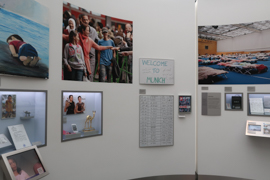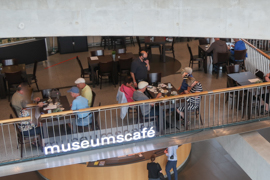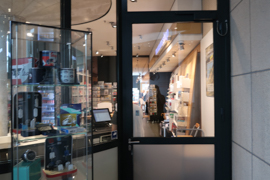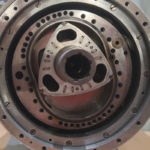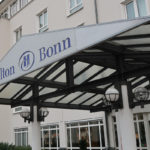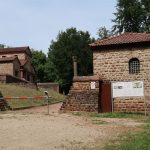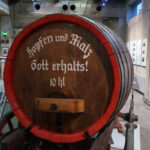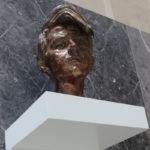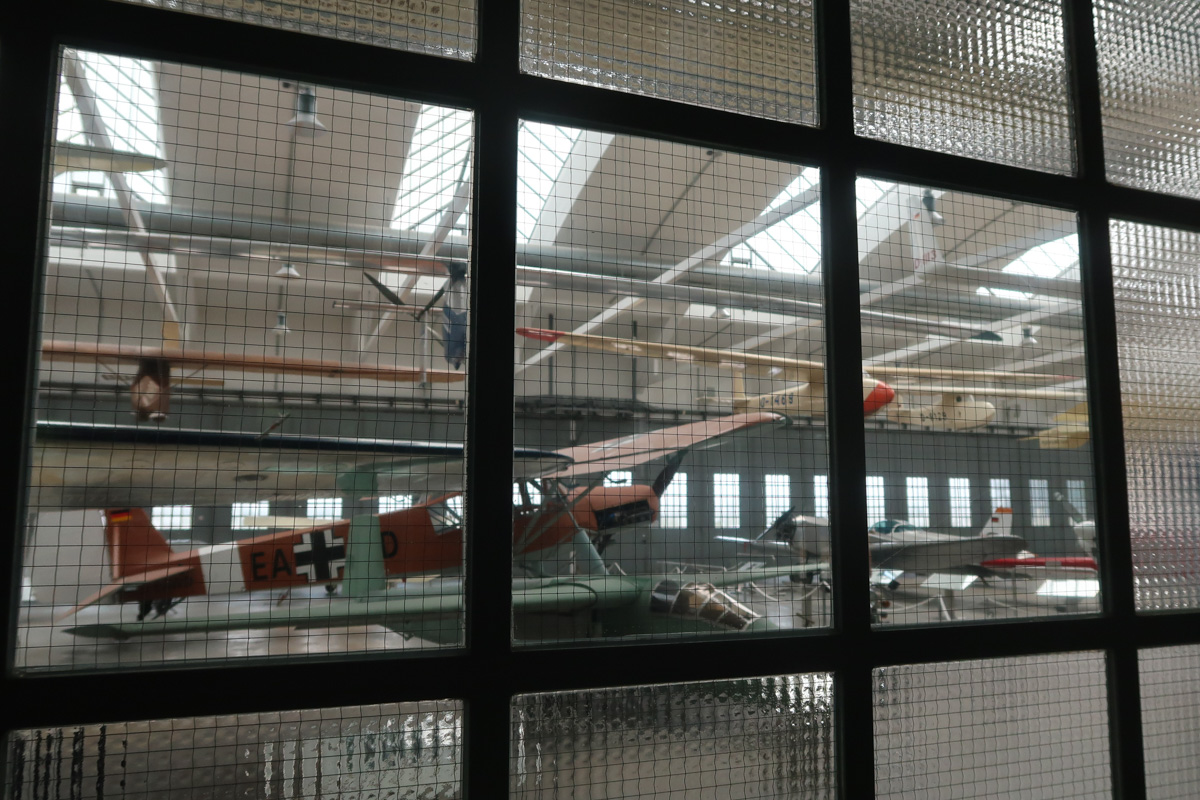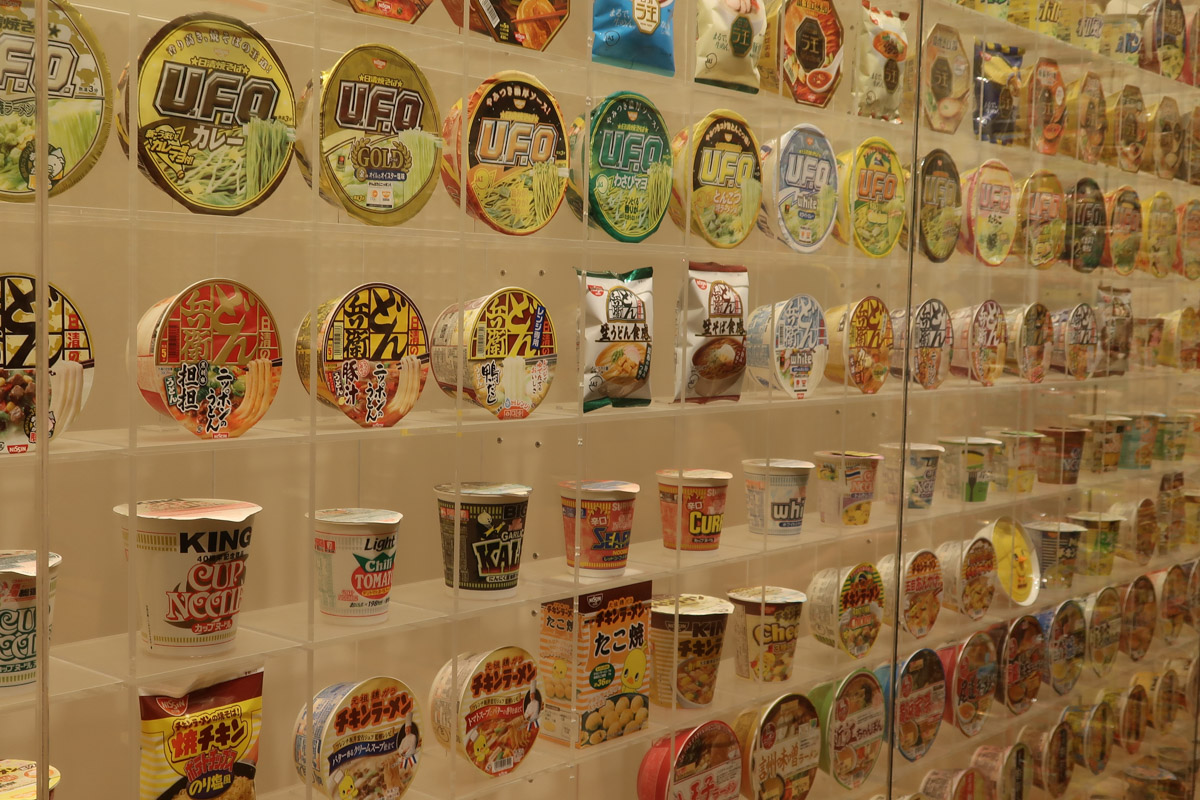Haus der Geschichte der Bundesrepublik Deutschland Bonn
free entry
Flyctory.com Pros
- Great collection and exhibition about the German history
- A lot of very interesting exhibits
- Free entry
- Direct underground access
Flyctory.com Cons
- A bit thin in post-1990 history
Germany between World War II. – this is roughly the mission of the House of the History of the Federal Republic of Germany – or Haus der Geschichte der Bundesrepublik Deutschland, how the place is named in German. The museum, which is driven by the state (and is typically just referred to as Haus der Geschichte) is located at the Museumsmeile (Museum Mile) in Bonn. A very interesting place, which I definitely want to share with you on Flyctory.com.





House of German History – Location & Admission
The Museumsmeile is located South of the city center of Bonn, not too far away from the former German parliament. For example, I have visited and reviewed the Bonn Marriott hotel, which is just a short walk away from the House of German History. The museum has a direct access to the Heussalle / Museumsmeile underground station, which is serviced by lines 16, 63, 66, 67 and 68. There are parking opportunities around, but I would definitely recommend to go for the public transport option.
The museum is open every day but Monday. From Tuesday to Friday, the museum is opening from 9:00 to 19:00 hrs, while door open between 10:00 and 18:00 hrs on Saturdays and Sundays. Admission is free (which includes temporary exhibitions). The Haus der Geschichte is also driving other museums like the Tränenpalast in Berlin.








House of German History – The Visit
The House of History is telling the story of Germany starting with Nazi Germany and the consequences of WW2. The organisational kick-off has been in the 1980’s, but the museum opened in 1994 and covers the story of the Federal Republic of Germany as well as the German Democratic Republic between 1945 and 1990. One of the first major stories told is the Air Bridge (“Luftbrücke”), which has been necessary when the Soviet Union tried to limit the transport of goods to West Berlin. You also learn about how the Grundgesetz, the German constitution, has been defined and how the Western German parliament Bundestag became active. Of course, you also learn about the Volkskammer, the parliament of the GDR.
































The riots on 17th June 1953, which have been turned down by Soviet military, are of course also illustrated. Thereby, the museum is documented in German, all key information is available in English as well and you may use an audio guide, especially as a German non-native. You chronologically walk through time and thereby meet stories of East and West – like the importance of the Leipzig Trade Fair or the West German victory at the Soccer World Cup 1954.
























The Berlin Wall
As I grew up in West Germany, I am more interested about background how the GDR tried to influence youth, e.g. by their youth organizations. The erection of the Berlin Wall and the famous speech by John F. Kennedy in the city are of course also explained.






































However, the museum is not only featuring the “big stories”, but is also putting a focus on topics like mobility, consumption, cultural topics, but also the anti-baby pill. There is also a nice illustration of comparisons between East and West, especially on the sports side. Thus, the Munich 1972 Olympic Games is of course part of the Haus der Geschichte as well.



















The 1980’s: Getting Closer To The German Reuinion
Willy Brandt kneeing for forgiveness at the Warsaw Ghetto, East and West working closer together or the consequences of the Chernobyl Nuclear Catastrophe, which also boosted the importance of the green party in Germany – there are a lot of stories the museum tells about one of the most exciting decades of German history, the 1980’s. Finally, all these events lead to the reunion of both German states. The House of German History hosts a lot of original documents and contracts, which are still very special and impressive to me.
































From there on, the museum tells the story of unified Germany. Unfortunately, it feels a bit like the museum ran out of space or underestimated all the interesting stories happening thereafter. You do even find very up-to-date topics like the Syrian Refugee situation, but they are featured with a relatively small amount of information, compared to other parts of the museum.














House of German History – Services
The museum cafe is very popular among visitors. The museum is also driving a souvenir shop, which is selling typical tourist stuff, but also quite some literature.






House of German History – My View
To me, the Haus der Geschichte der Bundesrepublik Deutschland is one of the most remarkable museums I visited so far in Germany. The post-1990’s situation is a bit thin, but that just leads to a small negative impact on the very enjoyable, informative – and free – visit. If you are in Bonn and have sufficient time (I would at least suggest three hours), have a visit and enjoy all the fascinating items in display. Definitely a Top Pick!
Flyctory.com in Bonn
Here are all postings related to the former German capital Bonn:

I had to cancel a trip to Glasgow for health reasons this week. At least I feel more relaxed now ...

Wow, I had a quite intense week this time. I rarely had that many live events in a short time ...

Summer time is festival time. As there are more and more interesting shows coming up, I felt that it might ...

The long 15th February 2025 match day at Sportpark Nord in Bonn closed with the men's first teams' match between ...

At 15th February 2025, the German Floorball Bundesliga division came to the end of a regular season. My local club ...

Three times SSF Bonn vs. ETV Hamburg on one day - the Dragons had a very special match day towards ...

In contrast to the rather small range of field events, the Run & Fly Meeting 2025 featured quite a lot ...

After the women's match against Erlensee, SSF Dragons Bonn had another very interesting match-up on 3rd November 2024. Their home ...

Whole I struggled with squeezing floorball matches in Germany into my schedule in previous seasons, the 2024/25 provides a schedule ...

I haven't done a "Review Battle" for quite a while. Today, I am comparing two hotels of the same brand ...

After I already featured the Dresden vs. Weißenfels match at the first match day of the German Floorball Bundesliga, 22nd ...

After having visited their outlets in Essen and Cologne already, my wife and I made use of Good Friday 2024 ...

It's time to look back to . After I shared my new format My Year in Travel with you the first time, ...

I love to have a look to German artists, which might not be in key focus of the media. Sören ...

Floorball playoff time in Bonn: on 26th March 2023, the SSF Dragons Bonn hosted the first best of three match ...

The last posting of the year - Best Ones 2022 is introducing you to my best experience last years (as ...

It's been quite a while ago since I stepped foot into Sportpark Nord, the home arena of the SSF Dragons ...

Even though I do have a couple of airport reviews on Flyctory.com, I so far missed a lot of the ...

The hotel situation at Cologne / Bonn Airport used to be quite bothering. There used to be a single hotel ...

Travelling in Germany has been turned down to an absolute minimum. Hotels are just able to accept business guests and ...

In my Songs Of My Life section, I try to introduce you with very different songs, which influenced me during my ...

The Deutsches Museum (German Museum for Science and Technology) in Munich is one of the most fascinating places in Germany ...

The story of Ross Antony is quite amazing: having an English education as a musical artist, Antony is nowadays a ...

After we visited a couple of hotels in Bonn, we finally wanted to check out the only five star one ...

Holidays close to home? Not just due to Covid-19, I felt it to be more and more attractive to have ...

During the Covid-19 crisis, I visited quite a couple of drive-in movies, which became a very popular kind of entertainment ...

My birth town Bonn has been hit heavily by Covid-19. The key reason for that are not health issues, but ...

A Calculation Museum? Sounds like a place for die-hard nerds - but the Arithmeum in Bonn is really a popular ...

Why not doing it at home? Though Bonn is just some 40 kilometers away from our flat, my wife and ...

Before I went to Zons and watched the German interpretation of Rock of Ages at the Zons Open Air Theater, ...

A day after SSF Bonn's ladies home match versus Leipzig/Grimma, I watched the men's team in Holzbüttgen. Sunday Night Floorball ...

DJK Holzbüttgen close to Dusseldorf and Cologne is an amazing masterpiece of local sports club management. Having started with very ...

At the beginning of April 2019, the floorball seasons worldwide were already about to reach their climax. On 6th April ...

The former German capital Bonn has a vast tradition of open air concerts. Their current premier open air location is ...
Free Entry Museums / Exhibitions in Germany
Here is a list of a museums & exhibitions I visited in Germany, which don’t charge admission:

The 2025 Rock of Ages shows in Cologne (I visited all of them...) gave me the opportunity to have a closer ...

For the second part of my "review battle" of museums dealing with visions around the future, we leave the Museum ...

Visiting Dortmund, my wife and I also headed to the Naturmuseum (Nature Museum) in the city of the German Ruhrgebiet. After the ...

The area around Trier is holding a bunch of records for the oldest buildings and structures in Germany. The rationale ...

During the Nazi regency in Germany, the Emslandlager (Emsland Camps) was a group of concentration and detention camps in the Emsland region, ...

Apart from regional local soccer dominator Borussia and the coal production history, Dortmund is quite well famous for a very ...

The Tränenpalast ("Palace of Tears") in Berlin is the former border crossing point between East and West Berlin. It is located at ...

Professional stargazing: The European Southern Observatory, short ESO is a collaboration of multiple European countries to gather astronomic forces on the ...

The Weiße Rose / "White Rose" was a resistance group during the German Nazi regime. Mainly consisting of university students, she ...

Frankfurt is the banking capital in Germany and one of the key financial centers of all Europe.Thus, it may not ...

Especially in the recent past, I read a couple of ridiculous comparisons between certain people and political groups (which I ...

Wuppertal in the Bergisches Land region Northeast of Cologne hosts a very special attraction for train and rail enthusiasts: the ...

